High in the Andalucian Hills, Benarrabá, Spain
Zagan the motorhome’s as hot as the rocks piled behind us to retain the walls of the free, municipal motorhome aire just outside the pueblo blanca of Benarrabá (N36.549263, W5.279122). After a couple of days under the vultures and cliffs of Casares, we took the half-gravel-half-tarmac road north here, defying the satnav’s confident 40 minute prediction by about an hour. Arriving here the stories told by fellow travellers transpired to be true: the aire has a magnificent view, and, wait for it… a service point per motorhome! Oh yes, no sharing of taps or grates here folks, we have our very own. Over-engineered it may be, but we’re not complaining. Our tap has become a some-time dog shower, soaking him periodically to help him cool off.

The amazing motorhome aire at Benarrabá
Our neighbours for the evening are David, a Welsh ex police chief inspector, Jean, a French anthropologist, goat cheese maker and author, and Mary and Stuart, who I’ve not had much chance to chat with as they arrived while I was stumbling flat-footed about the hillside earlier on. Once again my career sat staring at a computer screen dramatically fails to produce anything nearing a suitable anecdote for such company.
A quick aside, if I may? The á in Benarrabá is there for a reason, as we’re slowly discovering. Spaniards place a ton of emphasis on emphasis. If a letter has that small slash above it, it’s telling you that that particular word doesn’t meet the usual rules about how to pronounce it. In this case, the á has to be dwelled upon when saying the name of the place – Ben-ar-rab-aaaah. If the last letter was just a plain old a, you’d pronounce it Ben-ar-raaaab-ah. You might see here why our path to Spanish fluency is a slow, meandering one.
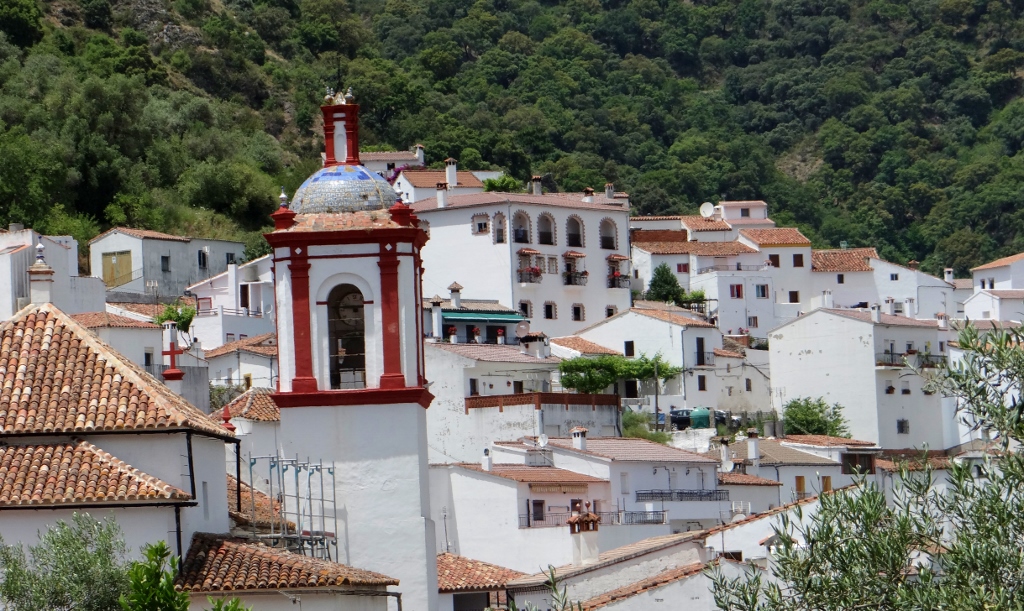
Benarrabá
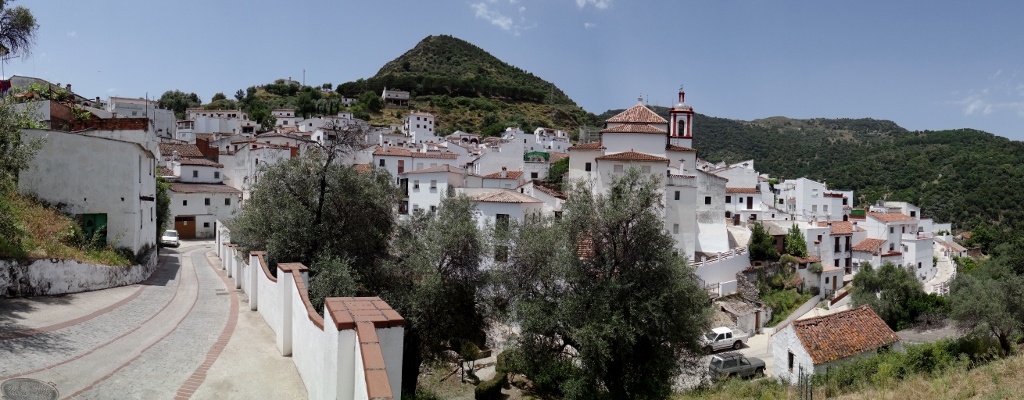
The place name comes from old, meaning the Son of Rabbah. It’s a Berber name, from when Spain was Islamic, and the Moors ruled with a gentle fist, living alongside the Christian parts of the community in harmony. The village itself is at the end of a 3km spur from the main road, and but for the motorhome aire, I doubt it would have ever crossed our minds to come here.
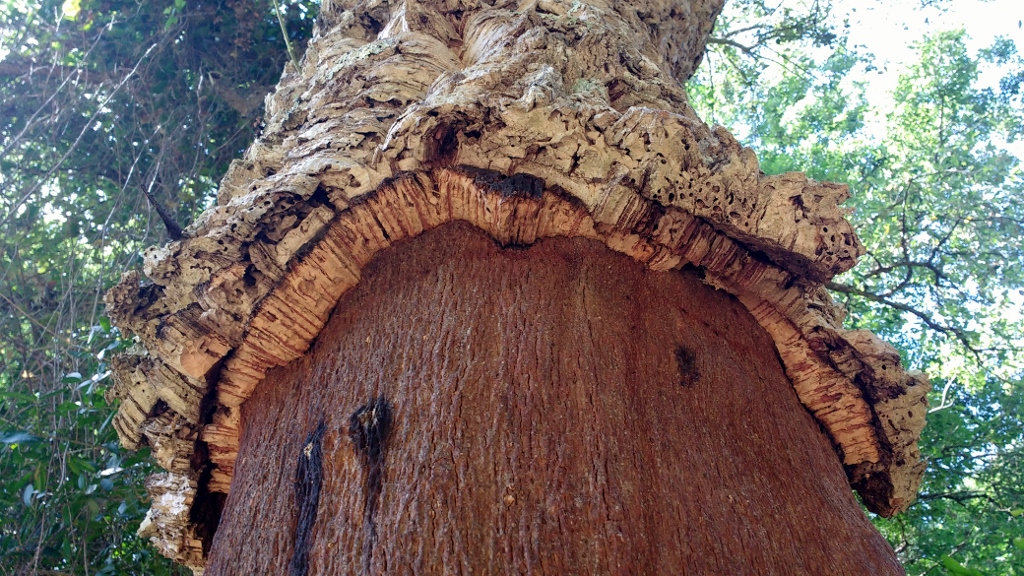
Benarrabá made its money (and still seems to) from cork, stripping the lower sections of the trees every 9 or 10 years
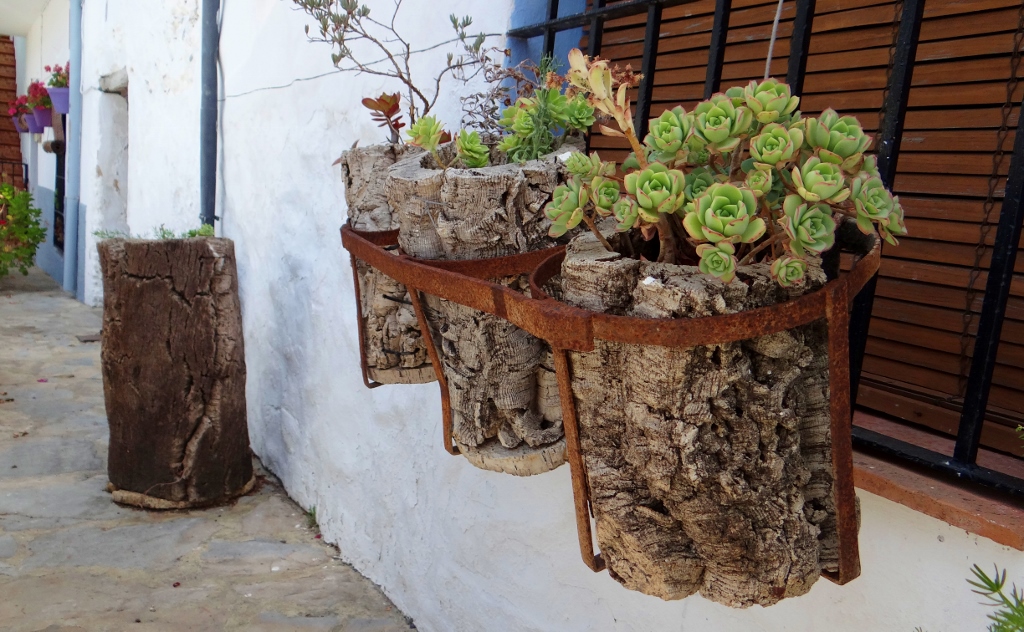
They’re clever those cork-strippers (corkistes?) and can get the stuff off without breaking it
Yesterday afternoon we sat in the shade of a tree, an expanse of untouched hillside behind us, ate, drank wine and talked with David and Jean. These guys have lived. David’s job didn’t so much as lead him, as he lead it, and the descriptions of amazing scenarios he’d encountered ranged from the bloody hilarious to the bloody horrific. Thankfully for us, as we’ve found with the few policemen and women we’ve had the luck to meet, he focused almost entirely on the fun stuff, and the antics of the famous. For his part Jean, who’s travelling in a small Citroen van with his dog, laughed out loud at the idea we weren’t even born in the late 60’s, when he’d lived with and studied a South American tribe for two years. The conversation was crazily varied and open, fascinating, something I’d have had zero chance to encounter if I wasn’t sat here, a privilege.
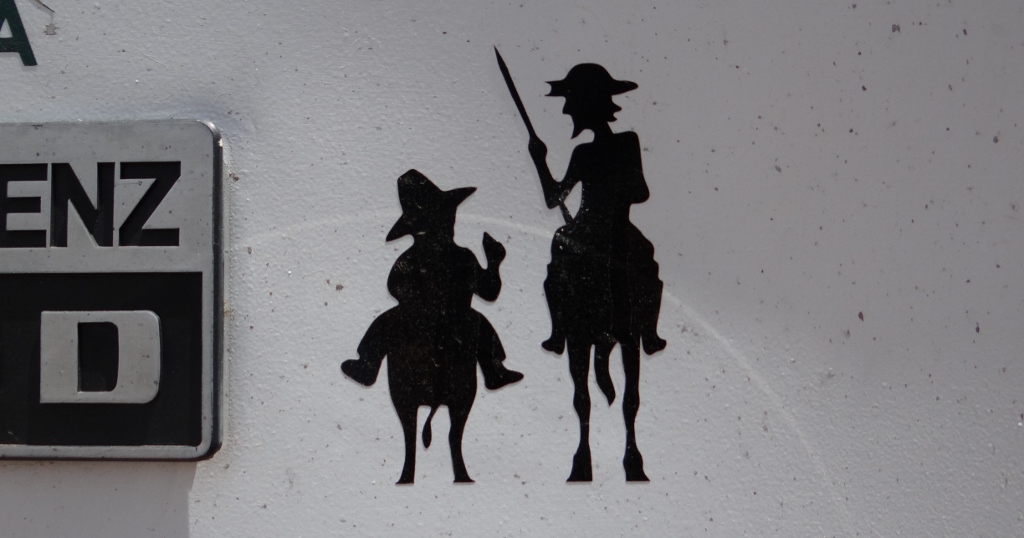
A Spanish Bumper Sticker – presumably Don Quixote
I’ve had a couple of walks around the village and enjoyed a hot-faced, slap-footed mid-day, erm, hike? around the hillside, reading the signs about lime kilns and water-powered flour mills and generally being lost beneath the cork oaks. The village feels a little more authentically knackered than Casares was. It’s clearly populated by folks who care deeply for it, with bright flowers taking the place of non-existent gardens and nippers running shouting from the village school, mums shouting back and swinging an array of Frozen-themed backpacks. But there are more Se Vende signs here, faded orange, seeking far-between buyers for properties requiring the skills of a talented, patient, deep-pocketed builder.
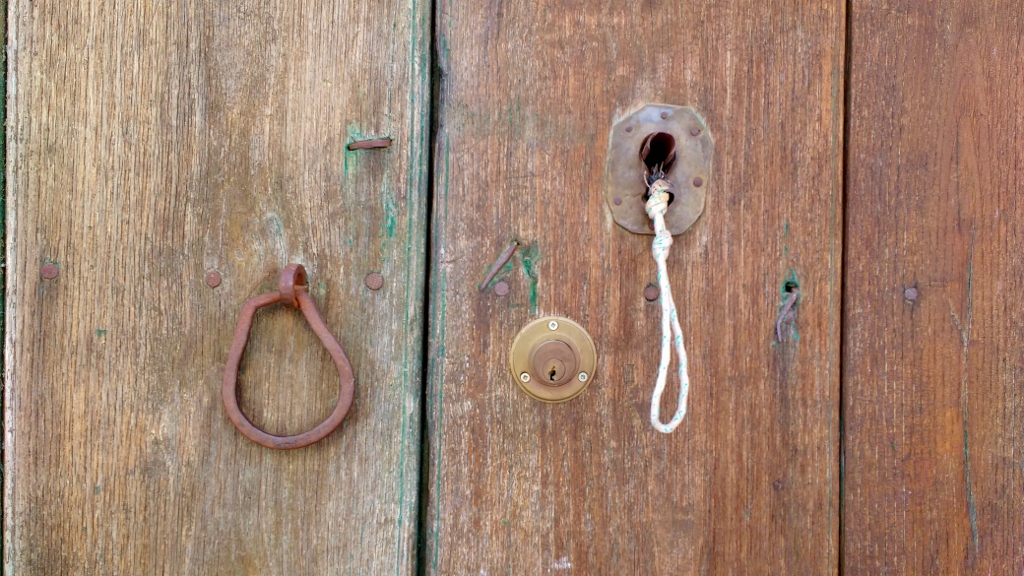
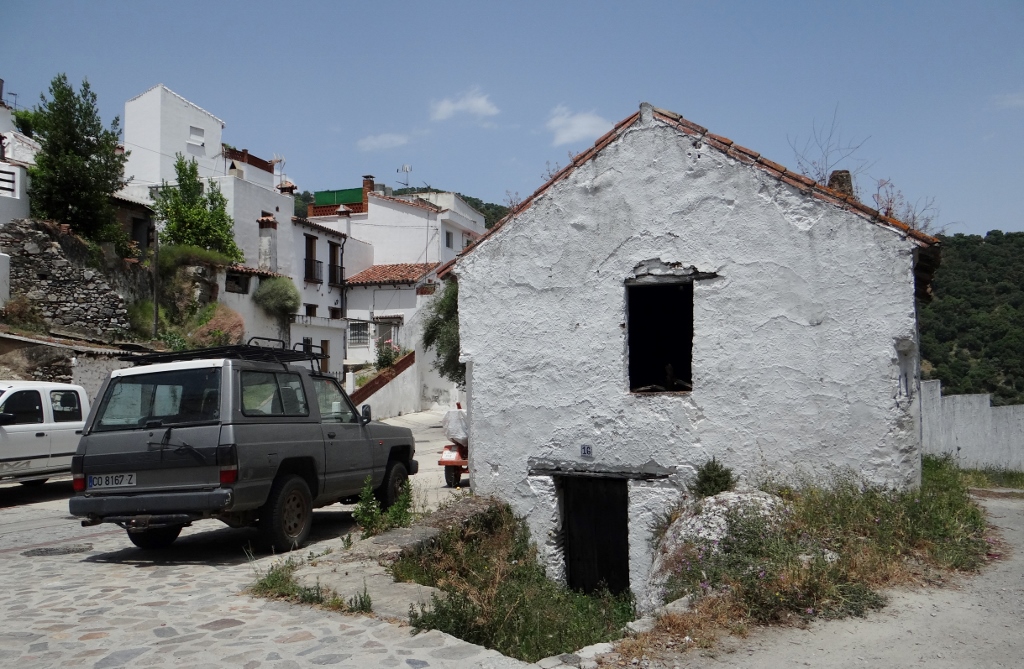
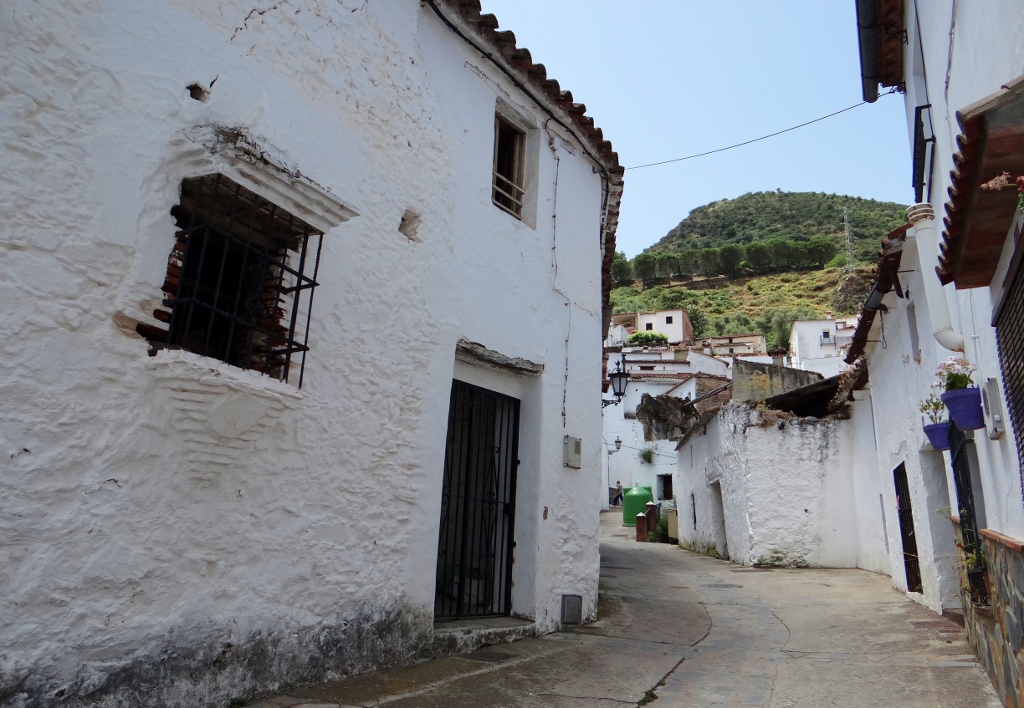
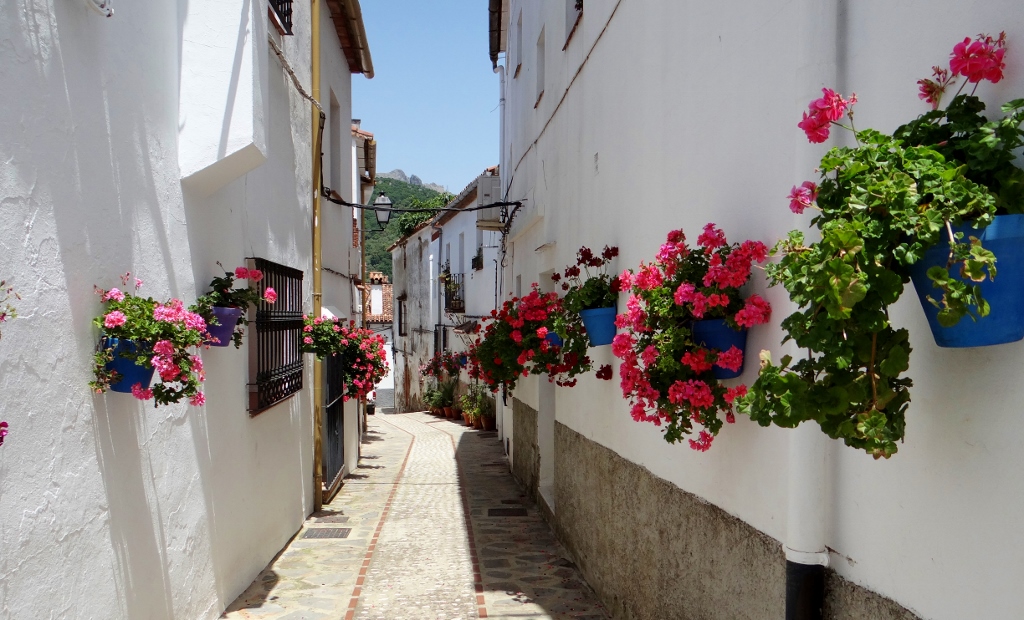
Our aim for this wee bit of our journey is to eat out, to get a taste of Spain a la Grey Gapper, and while we managed it once in Casares, we’ve eaten in twice the past couple of nights, fail… David produced a mean Bolognaise yesterday afternoon, but this evening we have no excuse and will need to sharpen our quisieras, while trying to remember to photograph the teeny bowls of delight before devouring ’em. Wish us luck.
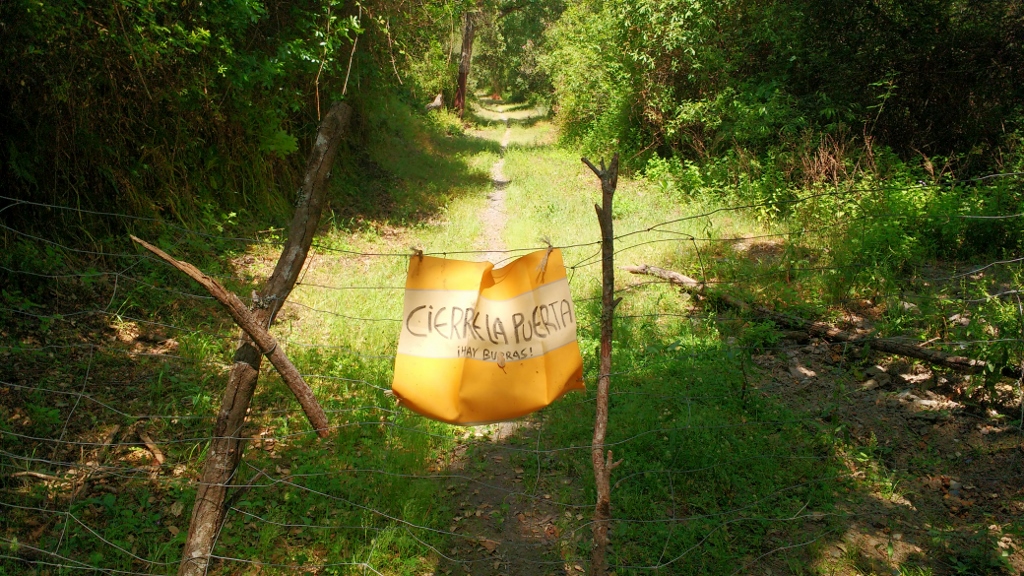
There are some wonderful walks around the hills, old mule or foot tracks for moving goods between villages and down to the coast. This one had an amusing ‘please close, I have donkeys’ sign. The gate mechanism was unfathomable and I climbed between barbed wire to get past

Signs everywhere to show you the way. I still got lost.
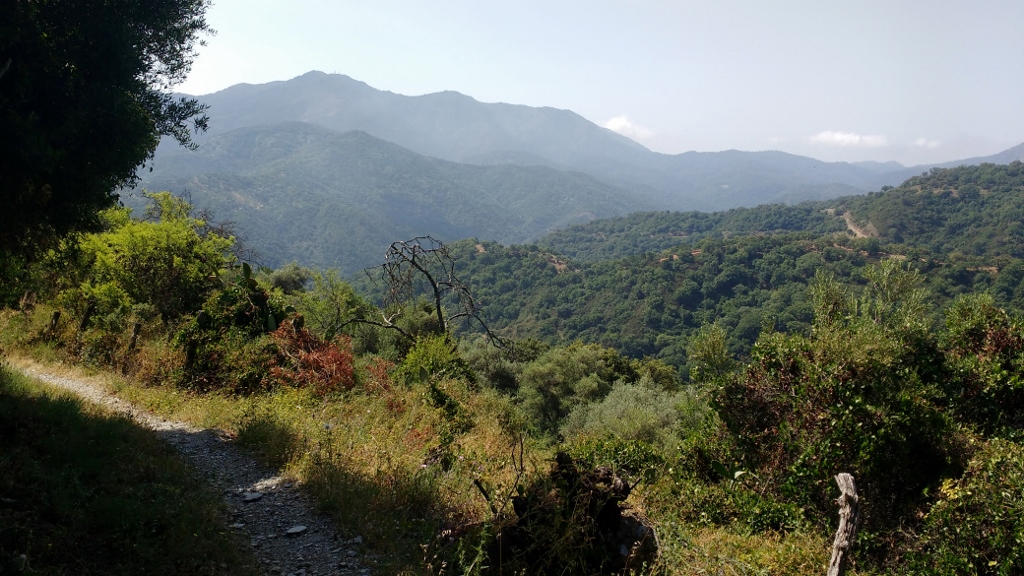
The view from the path. I saw no-one in 2 hours of walking
Cheers, Jay
P.S. While peering about the town’s cemetery, cap in hand, I came across this tile mural.
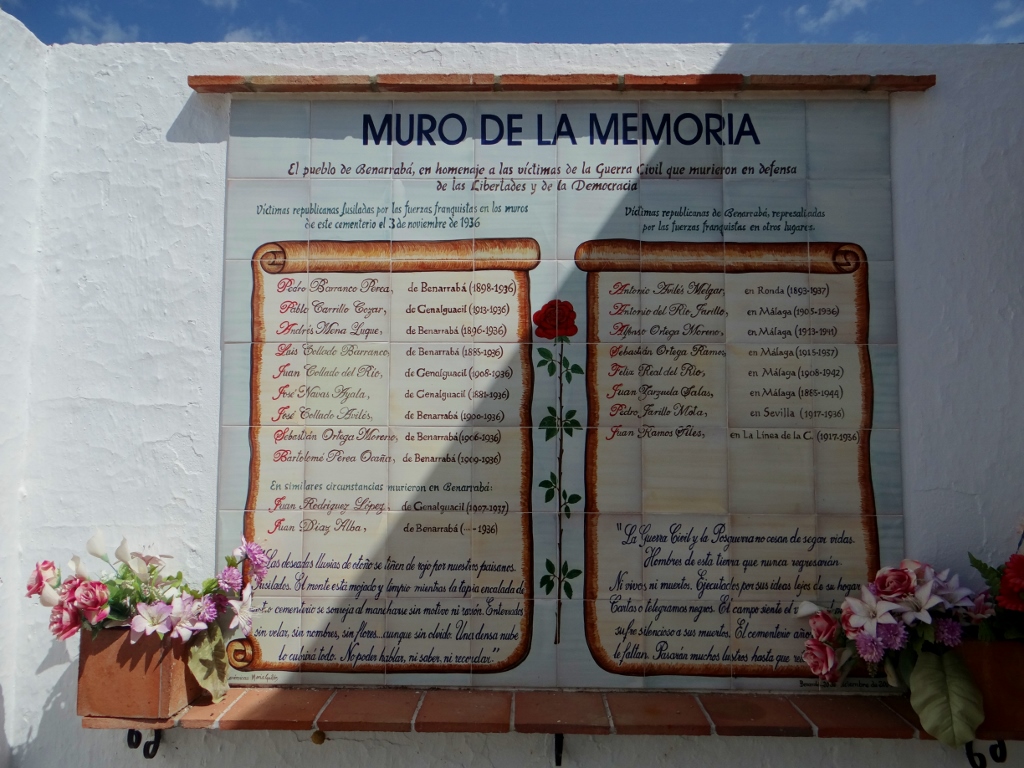
It seems to tie in with this angering, shameful event described in an article on the fabulous website andalucia.com:
“Very near to Puerto del Espino on the northern edge of the district, a disturbing event happened in 1936 at the outbreak of the Spanish Civil War. The area remained fiercely loyal to the Republicans. Therefore, the Guardia Civil abducted the entire male population taking them to a Cortijo called Los Morenos de Cortes. The place name has disappeared from today’s maps and it can only be presumed that the place was soon abandoned after this abduction of the workforce, which normally meant summary execution.”
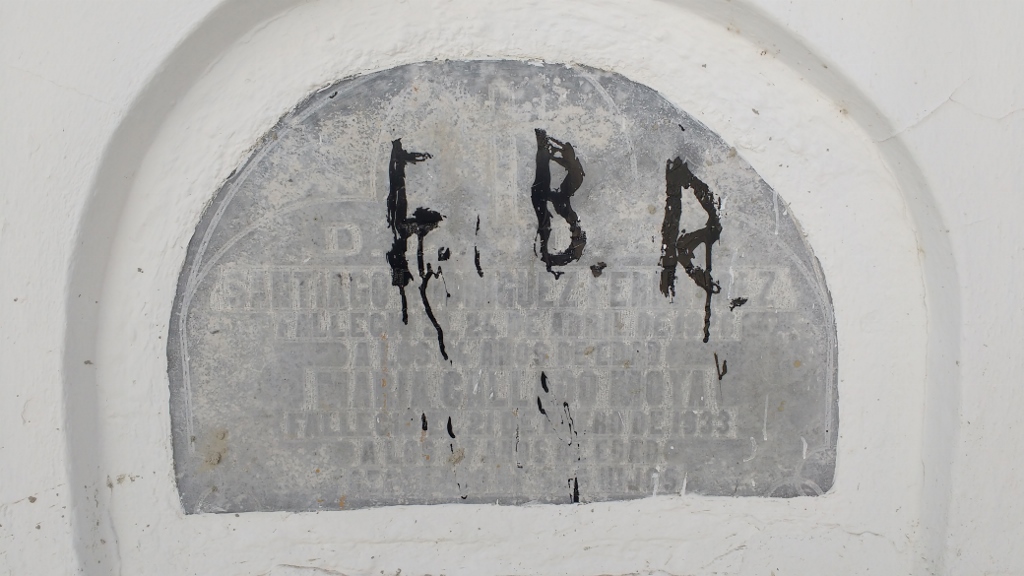
I also spotted this unusual sight – graffiti on a grave here. I can’t tell what it means

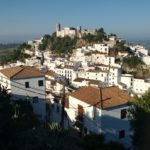

You do sound a little more at ease with life at the moment; relaxed and happy. Long may it continue ;-)
We were there at the end of last year. What a find – breathtaking views to wake up to. Enjoy!
Ahh, we stayed at the very same over engineered aire in Benarraba. We drove along the main road in fog and dark, down to the aire in fog and dark hoping we wouldn’t get stuck in the potentially squeezy village on our way to the aire. It rained the next day so nice to see photos of the sunshine.
Blimey Jane, that can’t have been a relaxing drive, those last 3km were a tad twisty! No fear of rain at the moment, the village was slow-cooking. We all sat out under the trees to chat and keep cool. Jean slung up his hammock. The Guardia Civil arrived one night at 11.15pm and weren’t in the least but bothered about this flagrant floating of Andalusian free camping law. Nice chaps they were. Cheers, Jay
We love to travel in Spain in March and like to explore and walk. We particularly like non tourist real Spain. Enjoyed reading your blog.